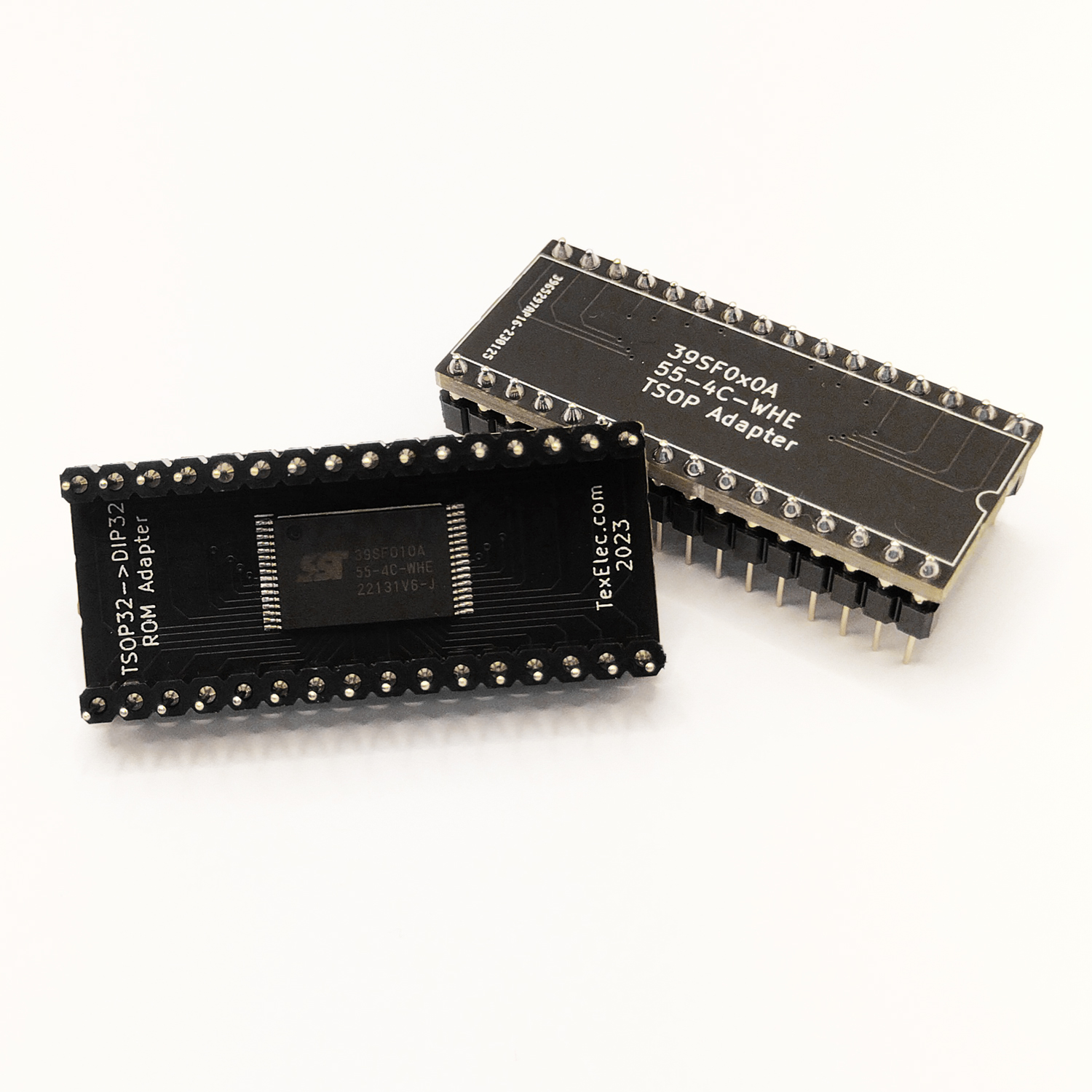Description
*PLEASE NOTE: Due to a shortage of ROM chips you may receive our SMT PCB Replacement ROM instead of the DIP ROM chip installed on the card pictured. The SMT PCB Replacement ROM is pictured in the last photo.
This card will allow a compact flash card to be used as a hard drive in an IBM XT or compatible machine. It will also work with ATA-2 compliant hard drives and with SD cards via an FC1306T adapter. IDE drives were released to the market well after the days of the IBM XT and natively supports 16-bit data transfers. As a result, the 8-bit bus of the IBM XT will not allow an IDE controller to function natively. This card will cut the data in half and send it one byte at a time to the bus instead of two like a native IDE controller. This card also uses the XT-IDE Universal BIOS to provide a BIOS extension to allow older machines to speak to Compact Flash / ATA-2 compliant devices.
There are two versions of the BIOS available for this card. One is designed for older IBM XT machines, and the other is for newer processors such as the NEC V20, V30 and 80286+. We ship our assembled cards with the XT version for max compatibility. If you wish to re-flash your chip, please see the wiki below for more information. Your PC will need to support BIOS extensions to provide the boot-time splash screen, and the subsequent running of the BIOS to enable the hard drive. Many older PCs, including the first revision or two of the original IBM PC, will not support option ROMs. You may need to update your BIOS to make this work, assuming there is an updated BIOS for your machine. Generally speaking, machines built after 1984 or so will support this.
We have built many of these cards now, and used them in several systems we have restored. During this time, we use only compact flash cards and don’t really use hard drives. Personally, we feel solid-state is not only safer, but more portable as you can move the card to a modern PC and easily move files back and forth. Secondly, ensuring full ATA-2 compatibility limits the drives which can be used to some degree. Namely, you cannot really use older drives, so you’re going to wind up putting a more modern drive in the machine, why not use flash. That said, we have heard of users successfully getting them to work.
Compact Flash cards are also not without their perils. Many cards we have found which claim ATA-2 compatibility are not fully compatible. This tends to be the case with lower end cards. We like SanDisk Ultra / Ultra 2. We generally use 2gb or 4gb cards, but larger or smaller can be used. Any ATA-2 compliant card should work, but be aware that some experimentation may be necessary. DOS 5.0 or 6.22 are probably best, as you can support a full 2GB FAT16 partition. Only use your target PC to format the card. Windows may, or may not configure the partitions correctly. Of course, you may run other operating systems as well, but create the partition via the OS setup. If for some reason your machine does not boot after FDISK and Format, run “FDISK/mbr” to reset the boot sector. This often fixes a hang at boot-time.
While this card will work in virtually any PC with an ISA slot, it is primarily intended for PCs which do not, or cannot support IDE and have a smaller data bus such as the IBM XT or clones. For best performance, you should try to get at least a 16-bit interface for your PC if it supports one. If you wish to use it in a newer machine anyway, this card should work so long as your PC supports BIOS extensions. One advantage is that there is no 504mb limitation, or any other legacy limitation (other than what the OS imposes) on using larger volumes. This support is provided by the XT-IDE Universal BIOS.
XT-IDE Universal BIOS via GNU GPL v2
This card does not have a mounting tab, so please be careful to orient the card the proper direction in the system. Plugging a card in backwards could damage the card, or your PC. We test all of our assembled boards, but we do not guarantee compatibility nor are we responsible for any damage to your equipment. Please treat this board, and your PC as static-sensitive, and never install cards while the power is on. We test all of out preassembled boards, so there may be a little wear on the teeth.
Lo-tech reference pages: blog entry, FAQ and wiki pages.
You can download the ROM files and utilities here: IDE-ROM-BIN-Files.zip
You may also want to check out the ISA CF Bracket Adapter Kit that will provide a slot in the back of your vintage PC and the SanDisk Ultra II CompactFlash Card.










